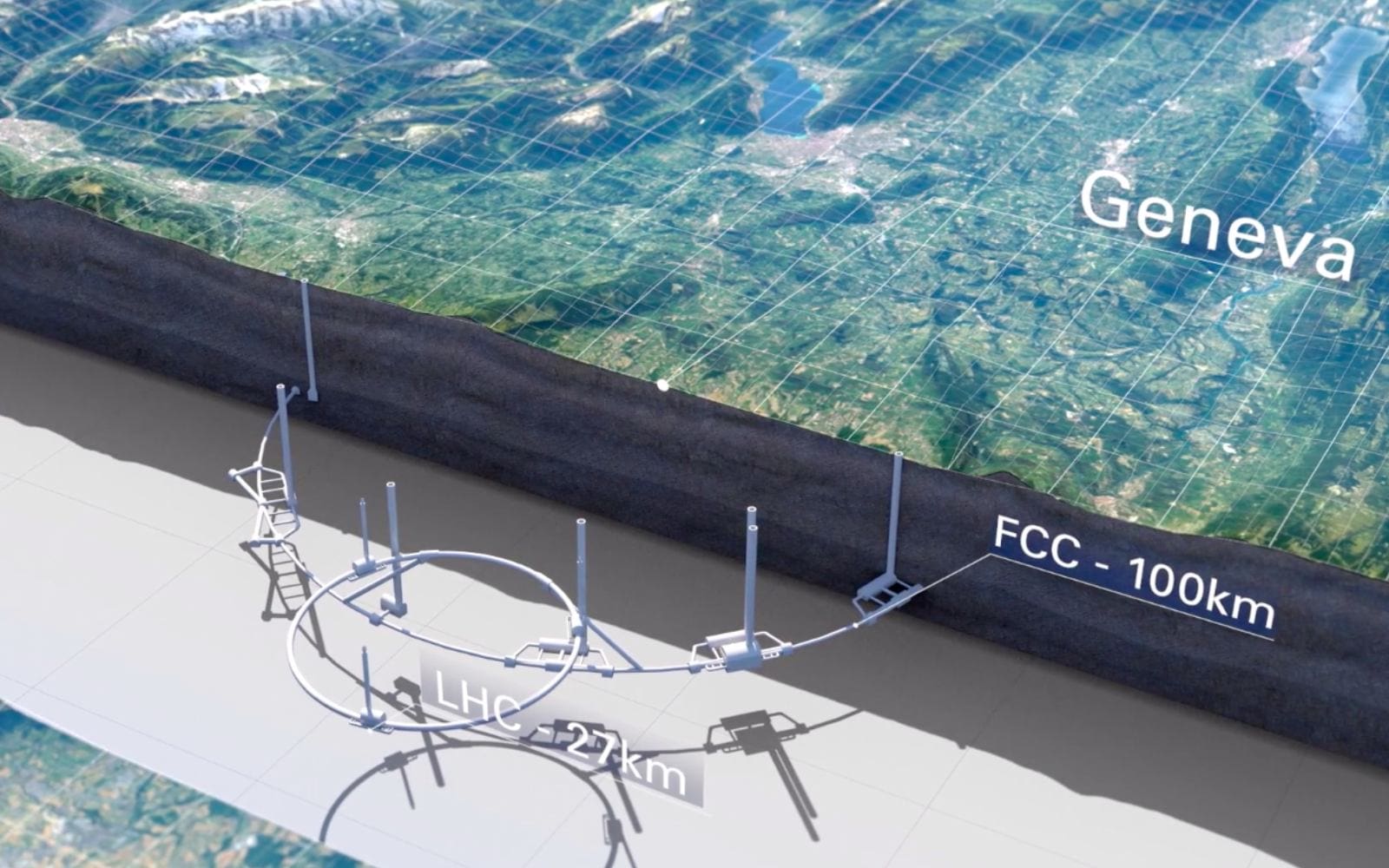The Future Circular Collider Study (FCC) is developing designs for a new research infrastructure to host the next generation of higher performance particle colliders to extend the research currently being conducted at CERN. The study explores different collider options, combined into a single research infrastructure built in a 100km underground tunnel, it can offer a solid and diverse physics programme extending beyond the end of the century.
INFN is involved in FCC through the acronym RD-FCC, with a complex research and development activity aimed at the creation of the IDEA detector (Innovative Detector for Electron-positron Accelerator), and also through the study of the infrastructure to be implemented and the design of the lepton accelerator.
Scientific goals
The goal of the FCC is to push the energy and intensity frontiers of particle colliders, with the aim of reaching collision energies of 100 TeV, in the search for new physics.
One of the core goals of the FCC programme is to directly observe and study these interactions of the Higgs, with the W and Z bosons, quarks and leptons, and of the Higgs with itself, the keystone of the Standard Model of particle physics.

